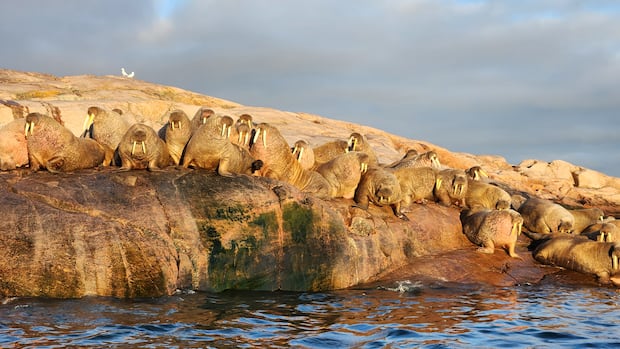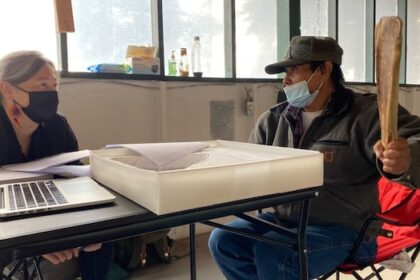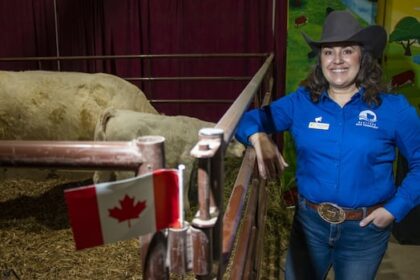NorthIgunaq is a delicacy made from fermenting walrus for months underground. But thawing permafrost and unstable ground are bringing the practice into question leading to changes in the tradition, and in some cases, health concerns.Igunaq is a dish made from fermenting walrus for months undergroundCarl Cardinal · CBC News · Posted: Nov 21, 2025 6:00 AM EST | Last Updated: 5 hours agoListen to this articleEstimated 3 minutesThe audio version of this article is generated by text-to-speech, a technology based on artificial intelligence.How changing permafrost is affecting fermentation of traditional Inuit food.For generations, Inuit families in Igloolik have made Igunaq, or fermented walrus. They use the permafrost to store the meat for months. Now warming temperatures are changing the ground itself. The CBC’s Carl Cardinal has more.Hunters in Igloolik, Nunavut, used to know exactly where to dig. Just beneath the gravel surface, into the cold, solid layer of permafrost ideal for preparing one of the most cherished Inuit delicacies: Igunaq, a dish made from fermented walrus.But now, thawing permafrost and unstable ground are bringing the practice into question leading to changes in the tradition, and in some cases, health concerns.To make Igunaq, hunters cut into the walrus, sew the meat and fat back into the animal’s skin and bury it into, or on, permafrost. It’s left for months to ferment before being dug back up to eat. Often the meat is buried on a granite stone to allow air circulation but no light. But increasingly, hunters say the ground beneath them no longer behaves the way it used to.’We’re digging deeper now’David Irngaut, a respected hunter from Igloolik, describes a major shift.“Nowadays Inuit are digging deeper because the permafrost is no longer easy to reach,” he said.The Igloolik water reservoir in 2015. Residents of Igloolik say the changing landscape is impacting traditional practices. (Submitted by Lee Turbide)As the ice within the soil melts, ground stability decreases. That affects everything from infrastructure in the North to travel routes, and food storage practices. A 2022 Canadian Climate Institute report explains how permafrost thaw has accelerated across the North. It warns that thawing creates unstable ground layers, sometimes triggering slumping and landslides, which expose deeper layers to warmer air, speeding up thaw and making walrus meat more difficult to ferment.“This cold storage system, which is not reliant on external power supplies, is becoming increasingly difficult to maintain as warm summer temperatures lead to permafrost thaw and decrease the internal temperature and depth of these chambers, potentially risking spoiled food and lost harvests. As a result, disease contracted through harvested foods may become more common,” the report states.Historically, Igloolik’s gravel, limestone, and slate terrain created ideal fermentation conditions. But now, the depth of frozen ground has changed.Loek Pascaud, a master’s student at the University of Sherbrooke, studies these shifts.“Permafrost is warming at a global scale … if it is less cold than it used to be, and also deeper, that might change what they try to achieve,” he said.Fermentation risks risingIgunaq is traditionally safe to eat when fermented in stable, cold, oxygen-limited conditions. But warmer temperatures introduce new food safety challenges.Public health agencies have reported that fluctuating temperatures during marine mammal fermentation can lead to botulism — a bacteria-based disease that can cause muscle paralysis and difficulty breathing — including cases linked to Igunaq in the Arctic.The Nunavik Regional Board of Health and Social Services recommend waiting until fall to begin the traditional outdoor aging process when temperatures are cooler.Walrus is not the only food facing environmental pressure.In Kimmirut, hunter Sandy Akavak says warming conditions are altering traditional seal fermentation too.“Inuit used to ferment whole seals in the shade — not buried,” Akavak said.But this method requires consistently cold air temperatures and that’s no longer a given.Both Akavak and Irngaut worry that as the climate continues to warm they may loose the practice altogether and have to find news ways of fermenting their meat.ABOUT THE AUTHORCarl Cardinal is a reporter with CBC North in Iqaluit.
Friday, 21 Nov 2025
Canada – The Illusion
Search
Have an existing account?
Sign In
© 2022 Foxiz News Network. Ruby Design Company. All Rights Reserved.
You May also Like
- More News:
- history
- Standing Bear Network
- John Gonzalez
- ᐊᔭᐦᑊ ayahp — It happened
- Creation
- Beneath the Water
- Olympic gold medal
- Jim Thorpe
- type O blood
- the bringer of life
- Raven
- Wás’agi
- NoiseCat
- 'Sugarcane'
- The rivers still sing
- ᑲᓂᐸᐏᐟ ᒪᐢᑿ
- ᐅᑳᐤ okâw — We remember
- ᐊᓂᓈᐯᐃᐧᐣ aninâpêwin — Truth
- This is what it means to be human.
- Nokoma












